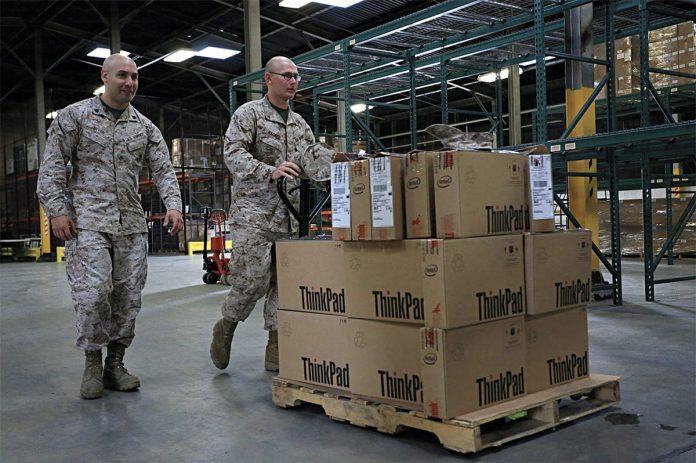Federated Wireless has just completed a successful demonstration of a 5G private network in shared spectrum for the U.S. Department of Defense, ahead of a smart warehouse deployment at Marine Corps Base Albany 5G testbed.
The 5G network made use of 80 megahertz of CBRS General Authorized Access spectrum, plus 300 megahertz of 37 GHz, which is also a shared band. Federated reported that download speeds on the network reached 1.5 Gbps with sub-15 millisecond latency.
“No other band would’ve enabled this kind of deployment, because there are no other bands where that kind of bandwidth is available for 5G private networks,” said Jennifer McCarthy, VP of legal advocacy for Federated Wireless. Mobile network operators, she added, wouldn’t be able to dedicate that much bandwidth to a private network because they have to serve their wide-area consumer networks. When the private 5G network is deployed on-site in Georgia, Federated said that it will use up to 750 megahertz of shared spectrum.
According to Federated, which is leading the $12 million private network project, the network will enable use cases such as warehouse robotics and holographic, augmented and virtual reality applications as part of modernizing Marine Corps operations. Federated’s Spectrum Controller for CBRS and its Environmental Sensing Capability sensor network are being used to enable the private network. It was built incorporating Open RAN standards and designed to comply with DoD specifications for a zero-trust architecture for native security and secure connectivity. Federated’s partners for the deployment include AWS, JMA, Cisco, Vectrus, Peraton Labs and Capstone Partners.
This is just one of multiple 5G projects that the U.S. DoD is investing hundreds of millions of dollars in, to explore how it will leverage advanced wireless capabilities in smart warehouses, training and distributed command-and-control.
“This pilot further underscores the importance of spectrum sharing between government and non- government entities while proving it can deliver the spectral efficiency and high bandwidth capacity necessary for private 5G wireless networks,” said McCarthy. “We have proven that with this model the U.S. has access to wide swaths of spectrum that will enable our country to become a force in 5G technology.”
This use of the spectrum comes full circle, in a way: The Department of Defense was the original spectrum holder for CBRS spectrum and agreed to allow shared commercial use of it. Now, DoD is taking advantage of the commercialization of the band for its own purposes, beyond the radar systems that still operate there. “They would not have been authorized to use that spectrum for this smart warehouse, had they not shared it with commercial users,” McCarthy pointed out.
The pilot network demonstration was conducted at Federated’s office building in northern Virginia. Now, the network equipment is on its way to the Marine Corps base in Georgia and will be constructed there within the coming weeks, McCarthy told Enterprise IoT Insights.
“They are very keen to get it up and running, and have it on-site and expand the operational capabilities beyond what we’ve already demonstrated,” she said, adding that the Marine Corps is also ultimately looking to expand its use of similar private networks across nearly two dozen sites around the country.
“I think this is the breakthrough use case, that’s going to make it obvious why shared spectrum is so important for these kind of uses cases,” McCarthy reflected. “We couldn’t be more excited about it.”

Federated touts private network demo for DoD ahead of smartware house deployment
ABOUT AUTHOR
Kelly Hill
Kelly reports on network test and measurement, as well as the use of big data and analytics. She first covered the wireless industry for RCR Wireless News in 2005, focusing on carriers and mobile virtual network operators, then took a few years’ hiatus and returned to RCR Wireless News to write about heterogeneous networks and network infrastructure. Kelly is an Ohio native with a masters degree in journalism from the University of California, Berkeley, where she focused on science writing and multimedia. She has written for the San Francisco Chronicle, The Oregonian and The Canton Repository. Follow her on Twitter: @khillrcr
